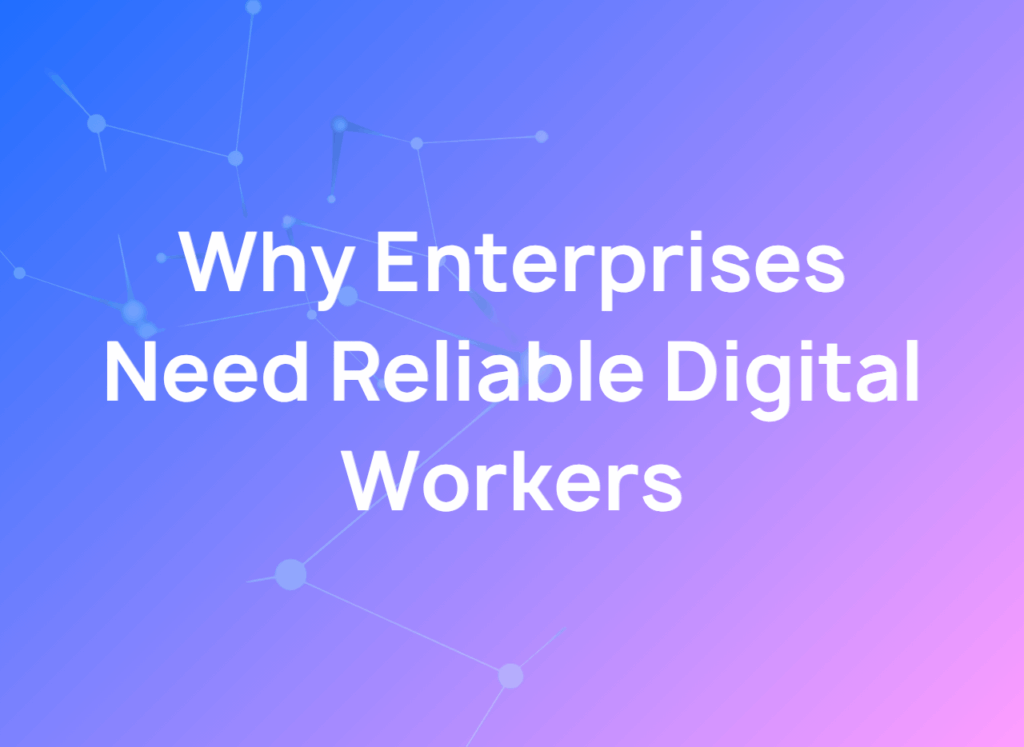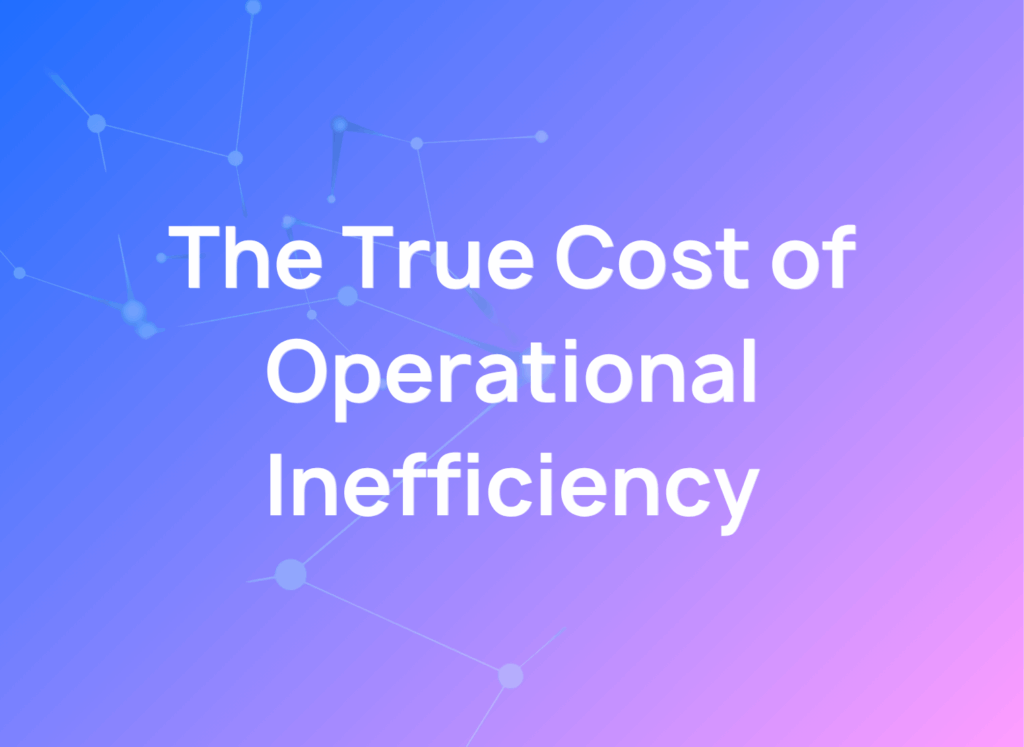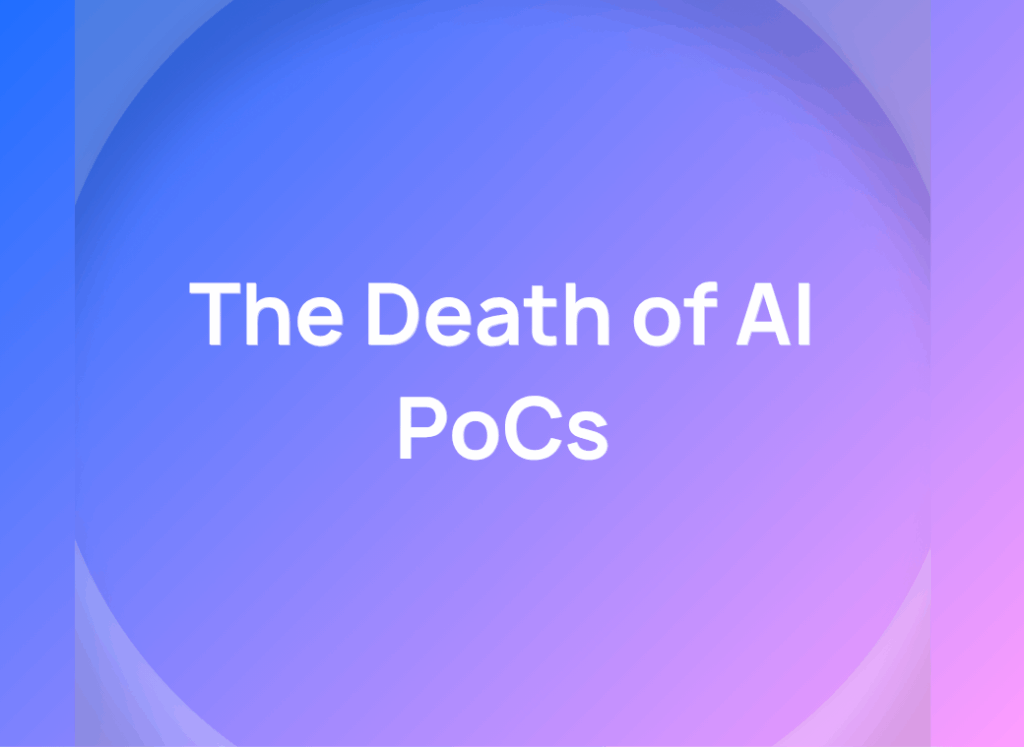The Future of Pharma Operations: Why Digital Workers are the Next Competitive Advantage
The Future of Pharma Operations: Why Digital Workers are the Next Competitive Advantage
Pharmaceutical companies are managing unprecedented complexities. Between rising R&D costs, intense regulatory scrutiny, and shrinking margins, the traditional levers for improving efficiency - like outsourcing, new SaaS tools, and basic automation - are delivering diminishing returns. The industry is at an inflection point, and a new competitive advantage is emerging: Digital Workers. These multi-agentic systems are rapidly moving from isolated pilots to plant-wide deployment, and business leaders are reimagining what’s possible.
This is not another conversation about chatbots or fragile scripts. This is about a new class of AI capable of executing complex, end-to-end workflows with the reliability and governance that regulated industries demand. As RPA and generic copilots hit their limits, purpose-built Digital Workers are redefining pharma operations with real, documented returns and breakthrough impact.
Analysts forecast that the AI in pharma and biotech markets will surge to $13.1 billion by 2034 - underscoring that this is not a passing experiment but a structural shift.
How do Digital Workers work in Pharma?
Digital Workers are a sophisticated workforce of multi-agentic systems that take on the compliance-heavy tasks slowing pharma down - generating huge revenue and getting therapies to patients faster. Unlike simple automation, these workers are designed to handle entire business processes autonomously, from intake to decision to action.
- It's not RPA: Robotic Process Automation (RPA) simply mimics human clicks and keystrokes. It follows a rigid script and breaks when anything changes - which is why it isn’t the best standalone solution to dynamic pharma workflows. Digital Workers, by contrast, leverage AI-powered reasoning to adapt to new data formats and application changes. Read more in our deep dive here
- It's not just an LLM copilot: Large Language Models (LLMs) can generate content, but they operate without the necessary guardrails for regulated work. They lack the deep system integration and deterministic logic needed for reliable execution. Digital Workers embed this reliability, beating LLMs on reasoning benchmarks by 10-100% - a sizeable improvement. Read more in our deep dive here
Digital Workers are engineered to execute end-to-end workflows across multiple systems. From drafting a complex RFP response to managing pharmacovigilance case intake, they handle mission-critical work at a scale and speed that humans alone cannot achieve.
The Evidence-Backed Impact of Digital Workers
The shift to Digital Workers is not theoretical; it's already creating a measurable impact across the industry. Pharma companies, like Syneos Health and Johnson&Johnson, are seeing dramatic improvements in efficiency and quality.
Agentic AI, the technology powering Digital Workers, is recognized by firms like Gartner and McKinsey as a key business trend. The numbers speak for themselves. In biopharma operations, McKinsey reports that AI-assisted deviation and CAPA management can lead to fewer deviations and 30-40% faster closure times. In manufacturing, one midsize European player used AI analytics to achieve a 29% increase in throughput in upstream bioprocessing.
The impact is equally transformative in pharmacovigilance (PV). Traditional case processing is notoriously slow and manual. However, analyses from IQVIA project that AI-powered Digital Workers can compress case processing timelines from a week to approximately 24 hours. This acceleration enables safety teams to detect signals faster and ensure more robust compliance.
Digital Workers in Action: Our Real-World Pharma Use Cases
Digital Workers are being deployed today to solve some of the most pressing challenges in pharma operations. Here are a few examples of how they are transforming key functions.
RFP Responder
- Challenge: Responding to Requests for Proposals (RFPs) is a high-stakes, manual scramble. Teams waste valuable expert time hunting for past content, ensuring claims are consistent, and managing tight deadlines, which increases the cost per proposal and risks revenue.
- Digital Worker Impact: A Digital Worker reads new RFPs, surfaces the most relevant information from prior documents, and drafts submission-ready proposals. It ensures every claim maps to an approved source and that the tone and branding are consistent.
- Business Result: Teams submit stronger, more compliant proposals faster. This reduces the cost per proposal and increases win rates.
Marketing Operations Worker for MLR Review
Check out our blog on this Digital Worker here.
- Challenge: The Medical, Legal, and Regulatory (MLR) review process is a notoriously slow bottleneck, with promotional materials often stuck in multi-week review cycles. This delays campaigns and is a drain on revenue.
- Digital Worker Impact: The Digital Worker pre-screens every asset against the latest drug labels, internal policies, and approved claims. It automatically flags risks, suggests compliant alternatives, and orchestrates a transparent workflow for human reviewers.
- Business Result: Review cycles are compressed from weeks to days. Marketing throughput increases without adding headcount, and the risk of late-stage compliance defects is significantly reduced, allowing campaigns to launch faster.
Medical Info & Safety Intake Worker
- Challenge: Contact centers are the front line for pharmacovigilance, but manual intake of Adverse Events (AEs) and product complaints is slow and error-prone. This creates compliance risks and delays the detection of critical safety signals.
- Digital Worker Impact: This Digital Worker plugs into contact center platforms and digital channels. It uses NLP to identify AEs and product complaints in real time, guides agents through a compliant data-capture process, and posts clean, coded cases directly into safety systems like Oracle Argus or Veeva.
- Business Result: Throughput is accelerated, and compliance is built in by design. The worker delivers inspection-ready outputs, which reduces the risk of missed safety signals and allows organizations to scale operations without increasing headcount.
Sales Territory Alignment Worker
Check out our blog on this Digital Worker here.
- Challenge: Pharma sales teams often operate with outdated or inconsistent territory maps, leading to inefficiencies, coverage gaps, and friction with field reps. Realigning territories to match market potential is complex, highly manual, and requires reconciling large volumes of customer, product, and performance data.
- Digital Worker Impact: This Digital Worker ingests CRM and market data, applies causal reasoning to identify optimal rep-to-territory assignments, and generates transparent alignment scenarios. It accounts for constraints like compliance rules, fair workload distribution, and key account continuity.
- Business Result: Territory realignments are faster, more accurate, and more equitable. Sales coverage improves, rep productivity increases, and management gains clear, data-backed rationale for every decision—unlocking millions in incremental revenue while reducing operational friction.
Investigator Grant Variance Intelligence & Reforecasting Worker
- Challenge: Clinical trial grants are set once, but visit mixes, pass-throughs, and FX drift daily. By the time finance notices, margins are already bleeding and site payments lag.
- Digital Worker Impact: The worker continuously reconciles plan vs. actuals, explains what changed, and updates the forecast on the fly. It prompts the right adjustment before problems pile up.
- Business Result: Sponsors protect margin and keep sites motivated with timely payments. Trials stay financially on track and hit milestones without last-minute firefighting.
Scope of Work (SOW) Digital Worker
- Challenge: Clinical programs rarely lose money on paper - they lose it in how work gets delivered. Ambiguous contracts, off-the-record approvals, and disconnected tools make it hard to know what’s in or out of scope. That uncertainty causes margin slippage and delayed billing.
- Digital Worker Impact: The Scope of Work Digital Worker turns static agreements into active oversight. It reads SOWs and MSAs from CLM systems, understands the contracted scope, and monitors live activity in CTMS, collaboration, and ERP platforms. When work drifts, it flags the issue and prepares a clear change order for review. Once milestones meet acceptance criteria, it assembles the invoice packet automatically and sends it for approval.
- Business Result: Projects stay financially healthy and predictable. Work, scope, and cash move together instead of falling out of sync. Audit readiness improves and billing cycles shorten.
Examples and ROI
The ultimate measure of any technology is its return on investment. Digital Workers deliver proven, massive returns by automating high-value work and optimizing resource allocation. Our Digital Workers Factory model aims to create $5 of digital labor value for every $1 invested.
The results are tangible. For example, at Johnson & Johnson, Digital Workers automated complex analytics, significantly reducing the turnaround time for insights and accelerating time-to-treatment for patients. We also helped Syneos Health build a causal optimization engine powered by Digital Workers, enabling their commercial teams to precisely identify which healthcare providers to target, how to engage them, and when.
Complete Observability with our System of Work
One of the biggest barriers to enterprise automation is the lack of visibility. If you can’t clearly observe what your Digital Workers are doing, you can’t trust them with critical processes.
Our Digital Workers are built to solve this problem through a unique System of Work.
Rather than operating in isolation, the System of Work provides a unifying layer that orchestrates Digital Workers across your existing applications. This ensures every action is visible, auditable, and accountable.
Digital Workers interact with your systems the same way a human would — whether it’s Veeva, Argus, TrackWise, or your custom platforms. This means you gain the efficiencies of automation without sacrificing oversight or compliance.
Reliability and Governance: The Non-Negotiables in Pharma
For any automation to be viable in a GxP environment, it must be trustworthy. Our platform is built on a foundation of reliability at every layer to provide the confidence needed to automate mission-critical processes.
- Reasoning Capabilities from the Ground-Up: We embed proprietary causal reasoning into the multi-agentic systems. This grounds the probabilistic nature of LLMs, enabling them to understand cause-and-effect relationships and dramatically reducing errors.
- Deterministic Business Logic: At the product layer, workflows are driven by deterministic logic. This ensures that processes follow predefined business rules without deviation, guaranteeing consistent and predictable outcomes.
- End-to-End Monitoring and Governance: At the Digital Worker layer, every action is monitored, validated, and logged in a comprehensive audit trail. Human-in-the-loop checkpoints are integrated where your SOPs require them, ensuring you always maintain full control and visibility.
This multi-layered approach delivers high levels of accuracy, making Digital Workers inspection-ready and safe for deployment in the most regulated environments.
Your Path to Implementation
Getting started with Digital Workers doesn't require a massive, multi-year transformation project. Using our library of pre-built Blueprints for common pharma use cases, you can deploy your first Digital Worker in as little as 24 hours. These blueprints provide an enterprise-ready foundation that is then tailored to your specific workflows and systems. With a typical payback period of less than three months, the value is realized almost immediately.
Conclusion: Build Your Future Workforce Today
The pharmaceutical industry is at a crossroads. The companies that thrive in the coming decade will be those that embrace Digital Workers and intelligent automation to build more efficient operations. Traditional solutions have reached their limits. Digital Workers are how enterprises can now augment their workforce.
By moving beyond brittle scripts and unreliable copilots, you can deploy a workforce of Digital Workers that think, adapt, and execute with unparalleled reliability. It's time to stop patching yesterday's solutions and start building tomorrow's competitive advantage.
Digital Workers are sophisticated, multi-agent AI systems designed to autonomously execute complex, end-to-end business processes in regulated environments. Unlike fragile RPA scripts or generic LLM copilots, they are engineered for reliability and deep system integration. A Digital Worker handles entire workflows—from intake and decision to action—with built-in governance and full auditability. This enables pharmaceutical companies to automate mission-critical functions like pharmacovigilance, MLR review, and clinical trial management with unparalleled speed, compliance, and documented return on investment.
Digital Workers represent a significant leap beyond earlier automation tools. Unlike Robotic Process Automation (RPA), which relies on fragile screen-scraping scripts that break with UI changes, Digital Workers use deep system integrations and AI-powered reasoning to adapt to dynamic workflows. And while LLM copilots can generate content, they lack the deterministic logic and governance needed for regulated tasks. Digital Workers combine multi-agent reasoning with auditable, deterministic execution, enabling them to reliably automate complex, end-to-end processes with built-in compliance.
The return on investment is both rapid and substantial, supported by clear evidence across pharma operations. Organizations can expect accelerated cycle times, such as reducing pharmacovigilance case processing from a week to around 24 hours and achieving 30-40% faster CAPA closures. Other documented impacts include significant throughput gains in manufacturing and reduced reliance on costly external resources. With pre-built Blueprints enabling deployment in as little as 24 hours, the typical payback period is less than three months.
Digital Workers are engineered for reliability in GxP environments through a multi-layered approach. Proprietary causal reasoning reduces errors, while deterministic business logic ensures processes adhere to predefined rules and SOPs. Every action is monitored and logged in a complete audit trail for end-to-end observability and inspection readiness. We also have "judge agents" which rigorously evaluate the output produced by Digital Workers.





